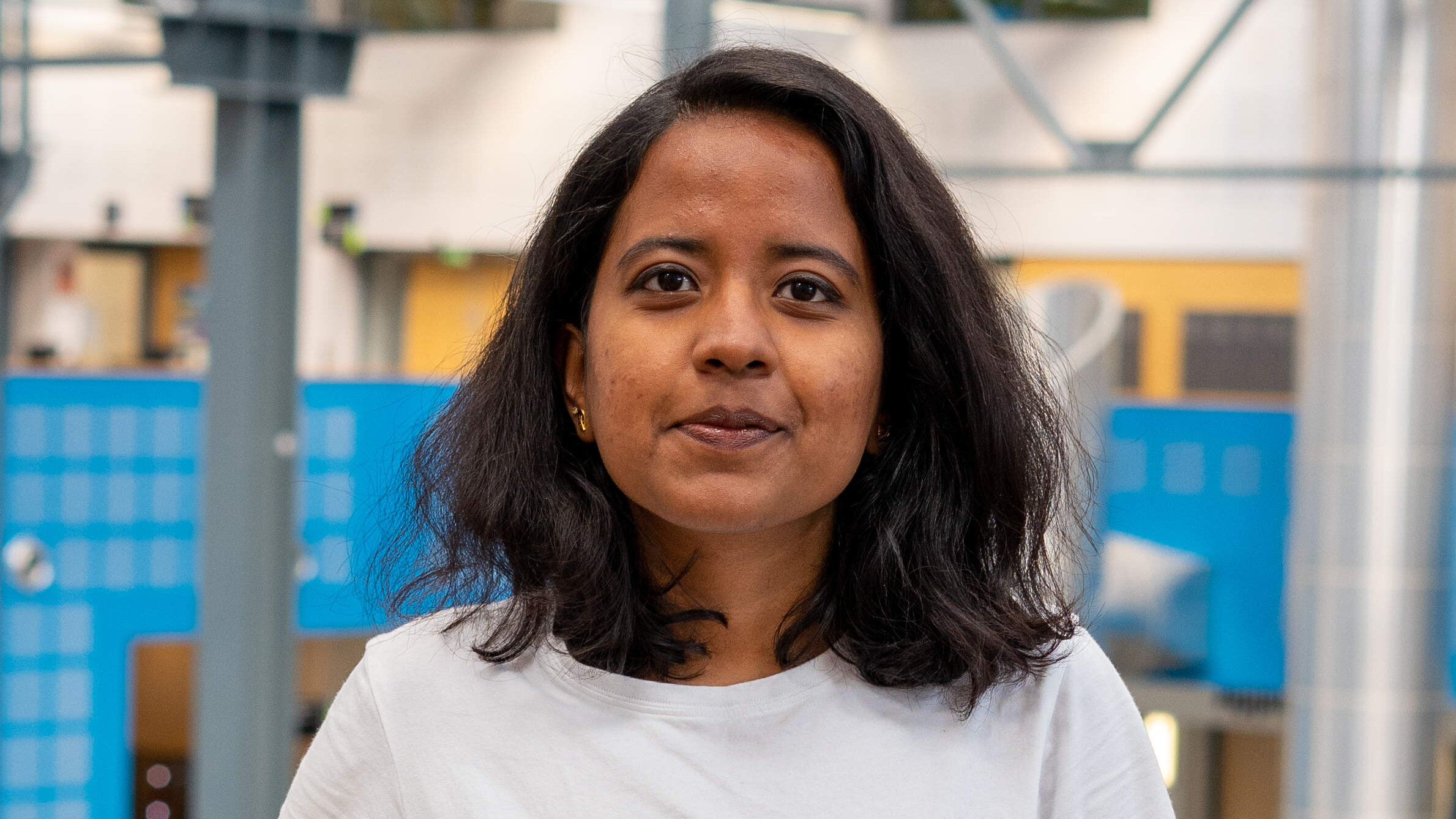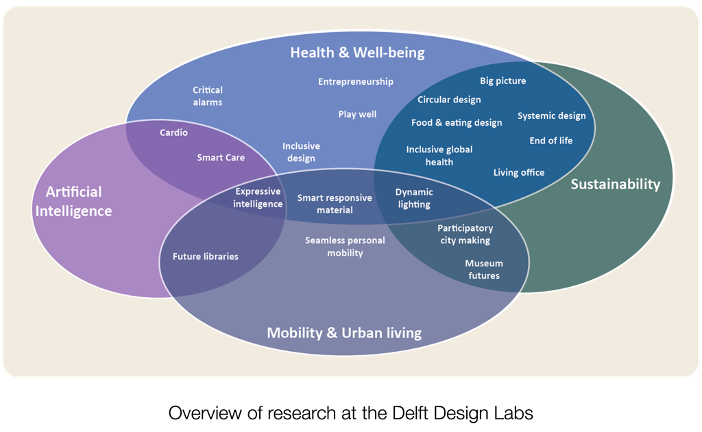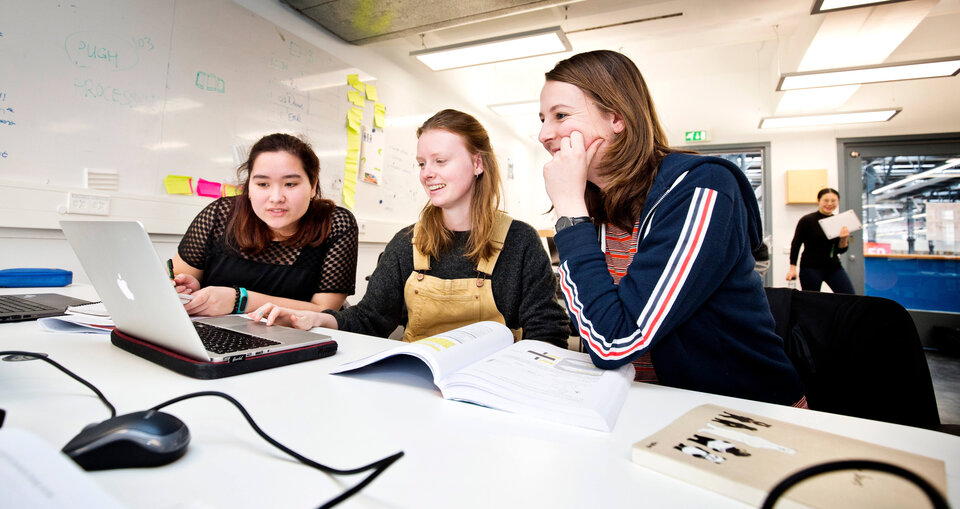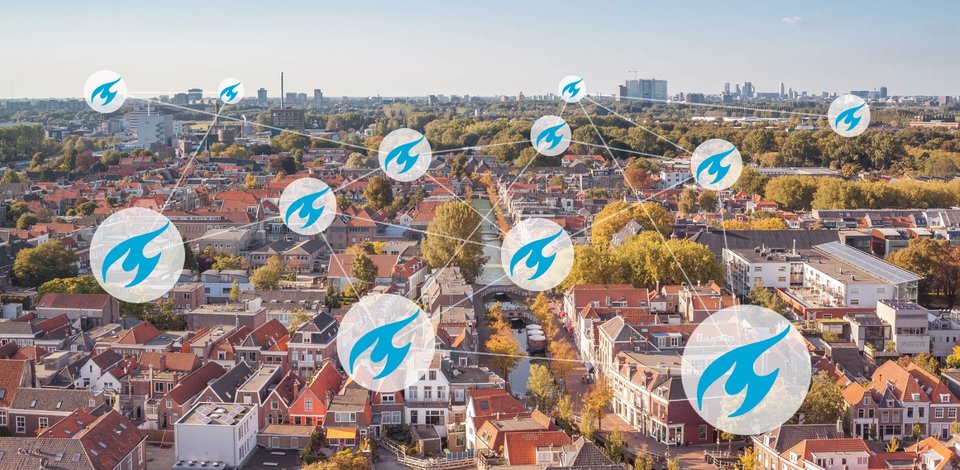Shruthi Venkat's experiences in Delft
INTERNATIONAL STUDENTS SHARE THEIR EXPERIENCES AT IDE
Article 1
Research at IDE
At the Industrial Design Engineering faculty, there is a lot of cutting-edge research going on. There are approximately 250 researchers in the community working on a wide range of topics. These topics are structured around IDE’s three research themes of Health, Mobility, and Sustainability, three Delft Design perspectives of People, Technology, and Organisation; and Designing Design. As a new student (or even an old one) it can be hard to keep track of everything happening. Hopefully, this article can be your starting point.
In the first days of the semester, for the course Manage your Master there are research days. These are a great way to get an insight into the research world at the faculty. They often entail a scheduled presentation from some researchers and an occasional activity or workshop to understand what they do. The more prominent research themes of health, mobility, and sustainability were decided upon a few years ago. This is based on the market requirements for the current and future scenarios. These themes cater to what the market needs while the design perspectives are what we as designers can offer to the world. The area of people, technology, and organization entail topics that we as designers can help the world improve on.

Hi, my name is Shruti, and I am following the Design for Interaction Masters Degree in Delft. Find out all about my experiences living and studying in Delft here.
Shruthi Venkat

Once you are accustomed to and get a hang of all the research happening within the faculty, you can reach out to specific people and talk about your interests. The Delft Design labs consist of groups that work in the space of theme-based knowledge development. The work in the labs covers a wide range of topics from future libraries to global health. That's another avenue to explore and find common interests. From personal experience, everyone is more than welcome and enthusiastic to share their knowledge with you. There are also opportunities to get involved with these research groups. For example through a project, a research elective, and an assistantship to name a few ways. The groups also host graduation students for master's thesis projects. Doing a graduation thesis with a research group can help situate the project with ongoing work and get expert help from the researchers in the group. This website links the profiles of researchers to current research. This overview makes it easy for students to find researchers that are most relevant to their area of interest. Hope this gives you a clear idea to start your research career at TU Delft!
Read Shruti's other articles below
-
This article will give you a clear idea of what the courses contain. This is written from my perspective, more detailed information can be found in Studiegids.

The Design for Interaction (DfI) master focuses on designing human product interactions with respect to physical, cultural, technological, and social contexts in which the products are used. The program educates designers to create better product experiences for all users.
It is formulated in a manner to give you the freedom to mould the program to your personal needs. Let that be in the field of medical design, technology, or the future or sustainability. The courses offer technical and hands-on knowledge which is then used in a variety of projects. The first year is where a majority of the DfI-specific courses happen, the second year consists of a semester of electives and one for the thesis.The first two semesters are a mix of DfI-specific subjects and some common subjects across all the programs. There are three DfI-specific subjects in the first semester and five in the second semester. Here's an overview of these courses.
First semester
Exploring interactions (9ECTS)
This is a design project course that promotes exploration, concept generation, and iteration. Its a combination of design and research focusing on the interaction between people and products. The project is individual so it can also help in building a personal style and a direction for the rest of the master. Personally this was my favourite course of the first year because it allowed me to explore, wander and find my way through a completely program.
Product understanding use and experience (6ECTS)
This is a theory course. The course has an interesting format where there are 12 lectures covering a variety of themes with an assignment every week. This is also a good introduction to all the research that happens at the faculty. This course enables you to understand the potential and limits of different design-related fields. The learning curve for this course was immense, I learnt about a variety of topics in the short span of a semester.
Context and conceptualisation (6ECTS)
This is another theory course that explores the contexts in which users interact with products. It is a research-oriented course and also has aspects of academic writing involved in it. The theory is presented with real-life case studies from the university and beyond which is valuable. This course really helped me pick up skills that came to use throughout the program in most of the other courses.
Second semester
Interactive technology design (9 ECTS)
This is a practical course on explorative design using interactive technology. The course focuses on prototyping and testing. Using the insights from each week's tests, the design directions can change. There are also workshops and opportunities to pick up new technological skills. I would highly recommend checking out the previous years projects to see how truly exciting the course can be.

Project usability and user experience assessment in design (9ECTS)
This is a project course focussing on the user experience of an existing product. A company stakeholder is involved, which bases the project in a real-world context. There are research and design phases, with activities such as usability inspection and user testing. The findings from the project and the complete redesign are presented back to the stakeholder. This course is very well planned and feels like the complete opposite of ITD which made this semester rather enriching for me.
Visual communication design (3ECTS)
Visual communication design is a three-part course. It starts with analyzing existing art history and works from different perspectives. The second part is where user studies are carried out to test out research questions in the visual communication space. The last aspect is a visualization based on the first two parts, using p5js. It's a good mix of introspection and working hands-on with software.
Research methodology (3ECTS)
This course introduces three design methodologies- quantitative, qualitative, and alternative. These are explained through theory and practice through the assignments. It offers a good foundational knowledge to design research. There is an opportunity to apply these methods in a real-world context, for a specific research problem as a part of the assignments.
Reflection on designing (3 ECTS)
the goal of the course is to help you look into your work and practice as a designer. It makes you look at your design philosophy from a critical, and conscious perspective. The course offers room for you to reflect on the role you play in society, currently and in the future. My submission for this course really made me look at myself from a different light and was rather enlightening by the end of it!
This wraps up the first year of the program and you are off to do electives and the graduation project after this. I believe that this one year as packed and overwhelming as it seems is a great opportunity to learn and grow as a designer. It is a good balance of technical and practical skills. Hope you can make the best of it, during your time here!



